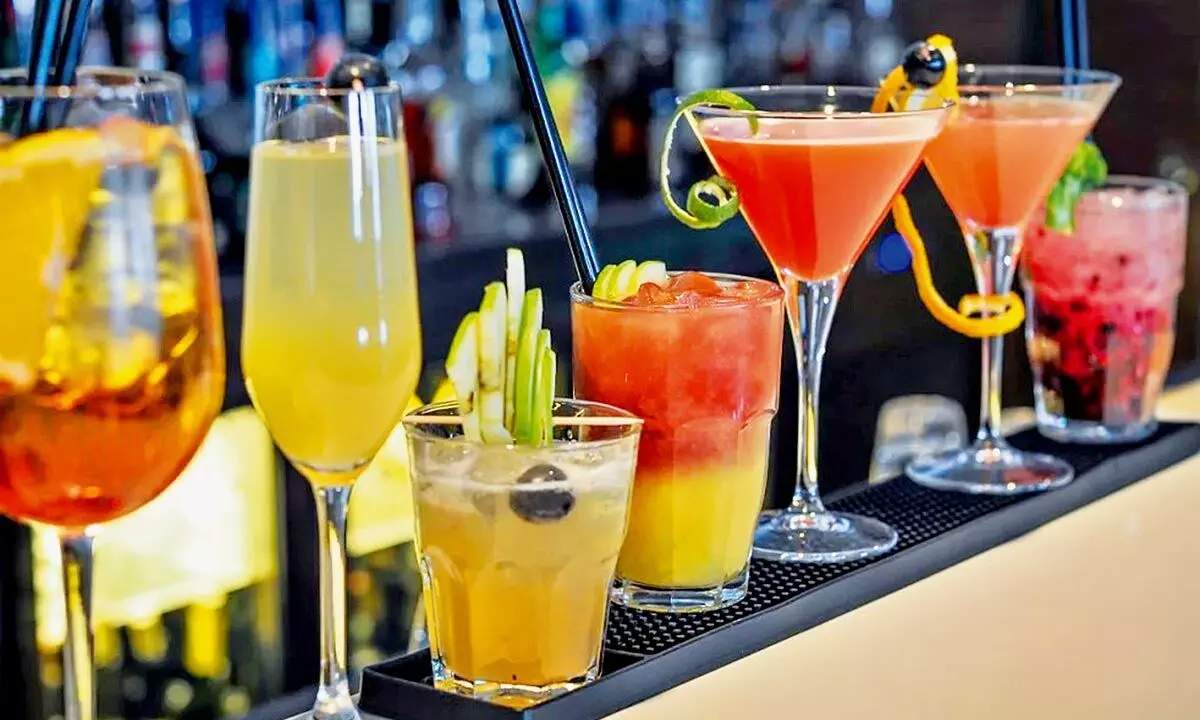Revitalised global beverage alcohol marketplace set for major strides
A look at the drivers of change for beverage alcohol in 2023 and beyond
image for illustrative purpose

The most promising growth opportunities for beer in the coming years will be focused on India, Latin America and Africa. IWSR expects global volumes to rise at a CAGR of +1% between 2021 and 2026, driven by Brazil, Mexico, South Africa, Colombia and India. Beer is also well-positioned to grow in a number of Southeast Asian markets
The trends that have previously shaped the global beverage alcohol marketplace will be transformed over the next five years as the world emerges from the Covid-19 pandemic and enters a period of growing economic instability. The effects of these shifts will be wide-ranging, from the growing importance of the home premise occasion to a moderation trend increasingly driven by the need to cut household spending.
As the world enters a period of growing economic fragility, those with financial stability – typically consumers with lower levels of debt and secure employment – will provide increasing opportunities for premium-and-above spirits and wine brand owners.
This is a notable shift from the situation during the Covid-19 pandemic, when millennials led the global consumption bounce-back in 2021 in key markets like the US, the UK, France, Germany and Brazil.
This phenomenon was driven by their higher levels of disposable income and embracing sophisticated home consumption occasions – but this trend is now likely to be reversed by economic instability, leaving consumers of legal drinking age with less secure finances and employment prospects in the years ahead.
In China, for example, IWSR consumer data shows that there has been a shift in the alcohol drinking population, with fewer 18−24s, possibly connected to 20% unemployment among graduates.
China’s leadership of the luxury spirits market will come under threat from the US in the next few years. The US status spirits market, spearheaded by high-end agave spirits, is forecast to add the most value to the status spirits category of any individual market over the next five years, bringing it almost on par with China. Growth in the US luxury spirits market is a continuation of a long-term pre-pandemic trend.
India is also poised to make strong spirits gains thanks to its booming economy; rising consumer incomes; market recovery and growth post-pandemic; and strong consumer confidence.
A number of key factors may dampen further spirits gains in China, such as a proposed government cut on conspicuous consumption, falling consumption rates amongst younger LDA drinkers and lower GDP expectations compared to the last five years. However, China has not yet experienced a proper post-Covid boom. When it does take place, it could help to counteract the impact of these headwinds in the short-term. This outlook follows a period of strong growth for high-end spirits in China, boosted by ecommerce gains in 2020, as well as the establishment of Hainan as a key duty-free destination.
The most promising growth opportunities for beer in the coming years will be focused on India, Latin America and Africa. IWSR expects global volumes to rise at a CAGR of +1% between 2021 and 2026, driven by Brazil, Mexico, South Africa, Colombia and India. Beer is also well-positioned to grow in a number of Southeast Asian markets.
In Brazil, growth has been driven by investments in the on-trade and ecommerce. In line with this trend, Brazil’s on-trade will contribute the highest volumes to the beer category across the top 20 beverage alcohol volume markets by 2026.
This follows long-term consumption declines of traditional beer in China and the US, and a global volume decline of nearly -7% in 2020, when the Covid-19 pandemic brought alcohol bans (South Africa and India), production stoppages (Mexico) and widespread on-trade closures.
The total wine category is in volume decline, in line with historical trends. However, Prosecco and Champagne continue to grow, and the high-end is gaining across all sparkling wine segments.
Pent-up demand to celebrate weddings, holiday gatherings and other personal milestones after the restrictions of the Covid-19 pandemic has helped to accelerate growth of sparkling wine in many markets.
A change of attitude is also a key driver, with the drink moving away from exclusive association with formal events and special occasions, to one that can be enjoyed in more relaxed contexts and more frequently.
Previously driven mostly by health and wellness concerns, moderation in alcohol consumption is now increasingly being spurred by economic worries and a need to cut household spending. Consumers are choosing to cut down rather than down-trade in many markets.
The long-established trend of moderation as a health and wellness choice continues, especially amongst those on higher incomes in countries such as the US, Canada, Australia and China. Germany remains the largest market for no- and low-alcohol products, however smaller markets, such as the US, Canada and Australia, will show more dynamic growth, with volume CAGRs 2022-2026 outpacing that of Germany.
For some consumer segments, such as millennials in select markets, previous interest in no- and low-alcohol products due to wellness concerns has now been combined with an economic imperative, amplifying the trend.

